
The Southeast Asian Confederation is one of the most active colonial groups operating in the DragonScape throughout the initial colonial period. A fascistic confederation scraped together from the total collapse of Southeast Asia and Oceania due to the extreme geographic caused both by the DragonScapes inception and the crumbling of global order that followed it. They were known to send the earliest operatives into the Americas in the history of the DragonScape as well establish both the earliest and largest colonial presence in the dragonscape. They would settle in thousands of small outposts across the dragonscape, be they research, economic or environmental exploitation, or as infrastructure for their increasing net of colonial presence. While it would all collapse in the aftermath of Jallher’s stand, their presence would continue to be felt by the presence of hundreds of thousands of SEAC survivors spread throughout the Americas.
The Pulse Collapse Period: 2020-2055
The direct aftermath of the pulse, while devastating and apocalyptic across the board, particularly was damaging to Southeast Asia. Now situated effectively at the edge of the world, Southeast Asia and Oceania were effectively cut off from most of Asia, Europe and Africa. This sudden economic isolation would worsen between 2020 and 2040 due to the gradual collapse and dissolution of the European Union, the growing Indian dominance of the newly formed South Sea trade route. Though it wasn’t until the 2040s, marked by the Desolation of Russia and gradual collapse of east Asia that would close off one of the final trade routes they had to the rest of the world. Combined with hostile naval dominance from India beginning in the late 2030s, most of the nations of Southeast Asia would either see social and economic collapse or be absorbed by India. By 2055 Southeast Asia was broadly a series of post collapse societies and failed nation states.
The Pre Colonial Period: 2056-2156
It wasn’t until the early 2060s when the many smaller, economically devastated communities of Southeast Asia and Oceania would have a new opportunity to rise due to the nuclear war between Pakistan and India that would lead to a collapse of Indian domination and the Indian state as a whole. While the nuclear fallout would cause many problems for the people and ecosystems of southeast Asia many of the remnants of various prepulse nation states would scramble to take advantage of the chaos. This would lead to small groups amongst Australia, Thailand, Malaysia and Indonesia would begin coordinating and reaching out to trade with the many other small groups amongst the East African coastline. This would eventually come to establish the core trade of the human world between Oceania and Africa and would be the lifeline between both the rising African Union and the Southeast Asian Confederation.
By the 2070s there had grown a larger political unity between Australia, Thailand, Malaysia and Indonesia and a call to further unite as a more effective trading bloc for the favor of everyone involved and, in 2074, the Southeast Asian Confederation would see its first meeting of the Confederation. This involved the establishment of regional governments in each respective region that would receive the job of more broadly uniting their vastly disorganized and uncontrolled regions and islands. Throughout the 2070s through to the dawn of the 22nd century would be spent broadly by an increasing unification of Southeast Asia and Oceania. This would involve a series of unification wars within Australia and Papua New Guinea, often imperialistically forcing compliance of various groups when it couldn’t be bought or taken freely, as well as the Malaysian perang wars which involved conflicts across Malaysia. Though while there were many conflicts in which groups were forcefully integrated into the growing Confederation, there were also many groups that joined in the hopes of joining on a growing wave of economic growth and potential prosperity. Most of Vietnam, Cambodia, and some parts of the Philippines would voluntarily sign into the Confederation to gain the benefits of a more powerful network and its economic growth.
By the beginning of the 22nd century AD, SEAC (The Southeast Asian Confederation) was one of the major growing powerhouses of the human world, Thanks to their collective power they would be able to bargain and achieve greater trading pressure with other human groups such as the Sawianaan front, the Mediterranean line, and the increasingly powerful African Union. Particularly SEAC grew into a technological powerhouse and a large exporter of valuable metals such as Zinc, Uranium, Iron, Silver and Gold. Thanks to investments in renewable energy (more out of a desperation to generate energy by any means rather than an ecological concern), they would also become a large exporter of natural fuel and gas.
But politically SEAC was far from perfect and a growing fascistic movement would rise out of the increasingly unified Australia and Malaysia and, due to their early involvement in the confederation, would take an increasing degree of political power within the confederation. But due to the economic stability SEAC provided, and the more physical security it would provide against threats from Indian and Chinese warlords, compliance would continue by most SEAC parties. But the culture would begin to turn increasingly fascistic and imperialistic regardless.
Throughout the early 22nd century SEAC would begin gaining land across East Asia and across the Pacific Ocean. Much of the far more rural, immensely isolated islands of the Pacific such as the Hawaii, Samoa, Vanuatu and their neighboring islands would fall under SEAC control, some peacefully, some through conquest, and others through a mix of tense transition and conflict. SEAC would also begin pushing into what was once china, taking over Guangxi and using the local population, with SEAC management, for the production and export of a variety of metal and oil related industries. Though they would continue having a variety of conflicts with many of the smaller Chinese remnant groups of the region for decades to come.
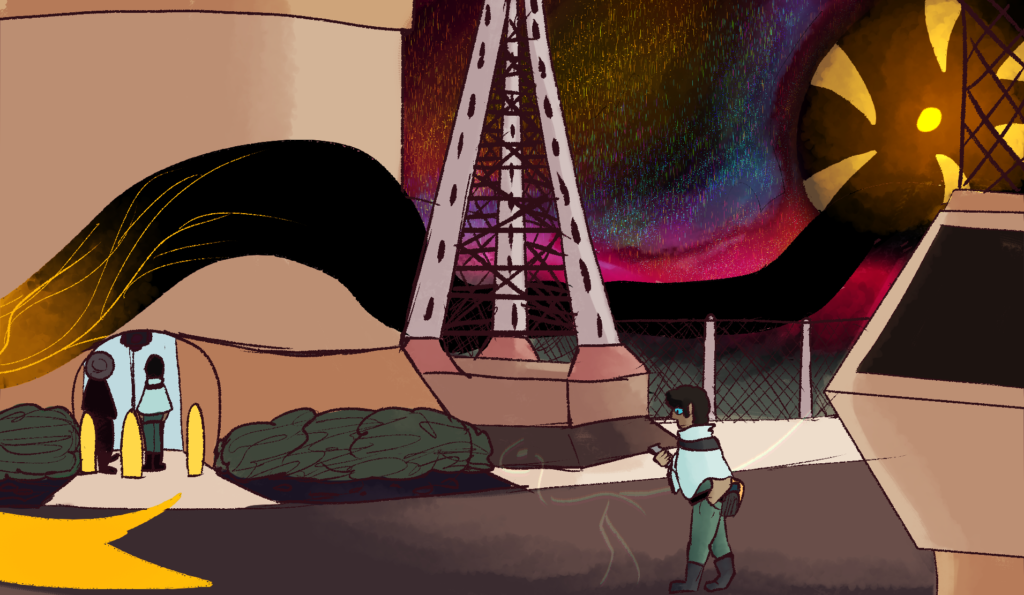
Note, just a small small fragment of Imuas memory of Hawaii in the 2156 period. Not necessarily 100% accurate obviously, but regardless.
The Very First Entrance into the DragonScape
The SEAC confederated territory of Hawaii, at this point both one of the closest still populated regions in relation to the Chiming Haze and a decades long holding of SEAC, had for decades served as a monitoring station for the Chiming Haze. It was through this that two organizations were mostly based throughout the Hawaiian Islands. The most important being EREM Agency, the Emergency Reactive Environmental Management Agency and its sub team of Foward Operational Specialist “hikers” or simply FOS hikers. On the 12th of December, 2156AD a noted shift in the intensity of the Chiming Haze would be noticed. After a series of successful tests sending empty, inanimate automated drones into and out of the chiming haze successfully EREM would seek and receive SEAC approval to launch a probing expedition into the Chiming Haze. With the following 3 months of work being part of a massive SEAC operation known as Operation Torchbearer.

The EREMFOS hiker chosen for the eventual first expedition into the DragonScape would be Oliver Ikaika, a Hawaiian who would come to be the first human to set foot in the Americas in over 136 years, beginning their 2 week expedition on the 24th of March, 2156 (36PA)
But SEAC wouldn’t afford the risk of letting Oliver leave. Namely and most importantly due to the risk of information about the Americas being possibly open to human exploration once again being far too valuable to let loose in the rest of the world before SEAC itself could reap the benefits of the Americas.
But moreover due to the evidence of experiments showing that living entities may not have been able to leave the lost Americas. While Oliver would end up being abandoned at the end of their journey, their different audio logs and entries would successfully be extracted from the DragonScape and returned to SEAC.
While the surreal revelations of Olis journey through the Americas would give SEACs increasingly imperialist government a degree of pause, it would not stop SEAC from launching their first flurry of colonial efforts. in 2160 (40PA), The Operation “Dawnlight” would begin with a series of small probing outposts that were to be established across locations across the new Americas to better understand both the situation in the Americas and the potential for extracting resources and economic production from the Americas to the benefit of SEAC.
Though Olis journey would not stay under wraps for long, in 2158 (38PA) it would be leaked to the broader world, beginning both a massive rise of interest in the lost Americas and the development of other colonial projects. While SEAC was the first to enter the DragonScape, a colonial gold rush had started and they wouldn’t be the only power like they had hoped.
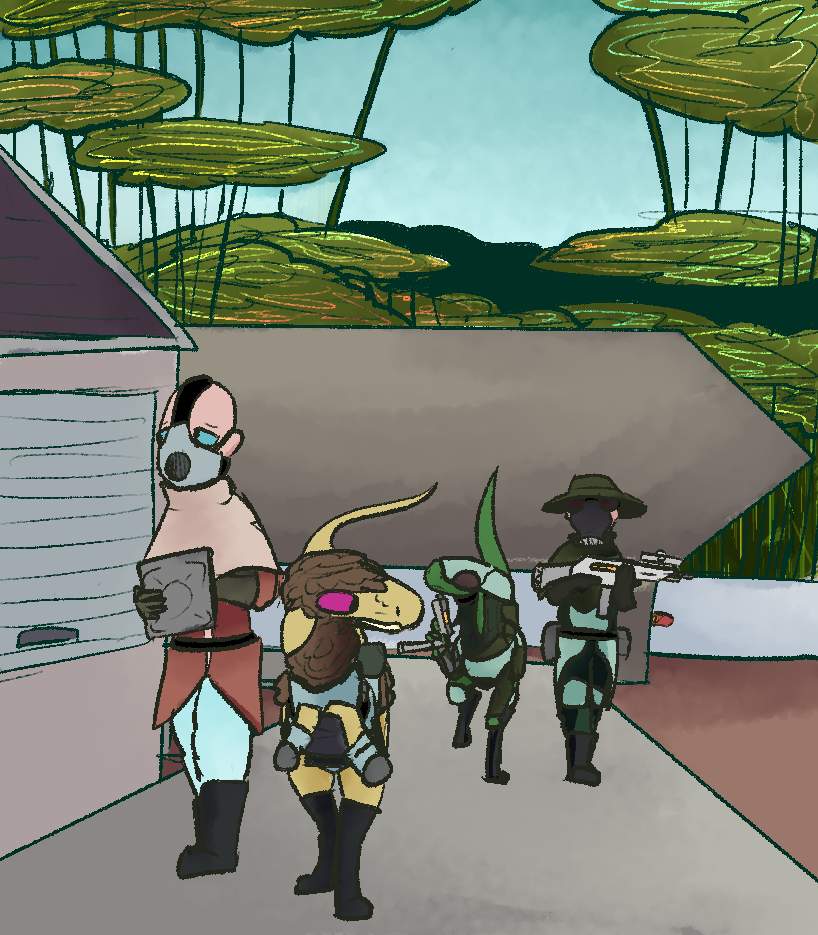
The Colonial Period: 2160-2212 (40-92PA)
By the early to mid 2140s SEAC had already begun establishing a broad net of probing research outposts across the DragonScape. With this early colonial period sourcing professionals and volunteers from across Southeast Asia, Oceania, and their territories in the Pacific Ocean and China. This was often encouraged through campaigns of propaganda and even misinformation by explaining that Oliver Ikaika had died, sacrificing themselves to ensure the information of their expedition got out. Many of these volunteers in the early colonial period wanted to be a part of history,
with the common ideology being a “reconquest of the Americas” and a “taming of the lands turned savage.” Carrying an even more intense imperialistic vigor than SEACs earlier campaigns in China and the Pacific.
These early outposts were meant to research and understand the DragonScape discretely. With most working to identify bountiful natural resources, old ruins full of valuable metals, and to understand the limitations of human existence in the dragonscape. Many also would try to establish themselves as logistical footholds in the Americas, as supply depots and stopping points for other incoming SEAColonial teams heading into the DragonScape.
By the mid to late 2160s (40sPA) The presence of SEAC could truly be felt in many regions of the DragonScape, with many local drekir cultures and sivilão õfuthar beginning to make contact with human groups. Due to SEACs goal being more to conquer the land and “tame the savage chimeras within”, conflict often resulted in these early encounters. This would create many of the early losses of outposts, often overrun by sivilão forces or local drekir warbands that could take advantage of the more supernatural qualities of the DragonScape. But this wouldn’t stop SEAC and their ambitions.
By the late 2160s a name would develop of the Americas within SEAC colonies and broader society, referring to its strange and often surreal supernatural aspects. By the turn of the decade the name “Polygondwanaland” would become the name used in the SEAC lexicon.
However, the logistical realities of the DragonScape would become more apparent in the 2170s (50sPa) during which an expose from a Filipino reporter, part of a subversive anti SEAC political movement, would make many of the realities of the DragonScape known. The fact those who enter it can’t leave, Olis abandonment at the hands of SEAC management, and the dangers of the Dragonscape such as the sivilão “Ring Slavers” and the presence of powerful anomalous godlike entities within. This information, previously obscured and repressed by SEACs government, would reach a larger audience and, due to them the prior decades excited volunteers would dwindle into the 2170s. People understandably weren’t necessarily willing to enter Polygondwanaland for the rest of their lives or risk turning into a “bestial savage chimera” of which they perceived the drekir to be. Due to this loss of willing volunteers, SEAC would begin using more coercive means to find specialists for the DragonScape and begin pulling involuntary colonials from their large population of prisoners and incarcerated persons. Doctors and Scientists were blackmailed, threatened to be exposed for political, social, or moral taboos if they did not move into the DragonScape. Political dissidents to the increasingly Malaysian and Australian controlled SEAC government would be kidnapped and sent into the DragonScape and, for the bulk labor and security, nonviolent prisoners were sent involuntarily into Polygondwanaland.
But, in spite of this change of colonial demographics, colonial expansion became far more expansive in the 2170s (50sPA) with the establishment of more specialized outposts that were more dedicated to extracting resources, researching niche aspects of the magic and natural resources of the dragonscape, and specialized projects within Polygondwanaland. By the end of the decade SEAC had thousands of colonial outposts within the DragonScape, with most being generally as well supplied as possible and mostly doing their jobs. The extraction of those natural resources helping SEAC push their influence on the human world even further.
Though it would be by the end of the 2170s (50sAD) that you would start to see the end of the initial “gold rush” of colonial outposts and expansive infrastructure would grind to an end. With most outposts slowly beginning to succumb to a variety of issues that would impact the efficiency and stability of these outposts.
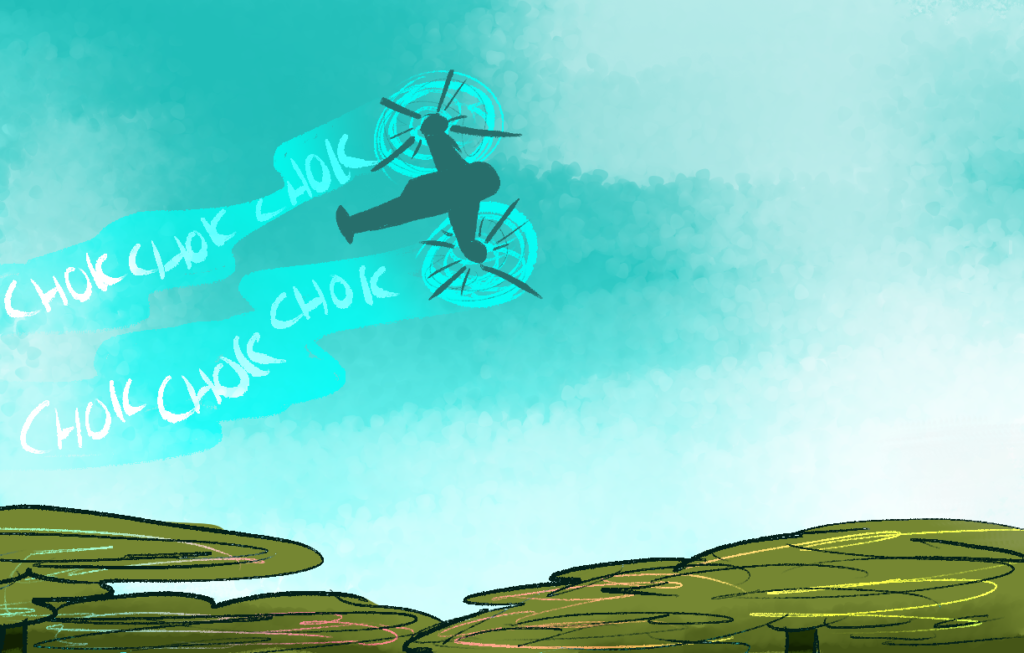
SEAC Colonial Decay
The colonies of the late 22nd century would begin to suffer from a phenomenon that would tend to be referred to as “colonial decay” of which SEAC would try desperately to crush at its roots.
This period of decay would generally be marked between 2180-2210AD (60-90PA). One of the biggest problems would be the increasingly dominant population of colonial drekir within SEAC outposts as, by this point there have been many waves of human colonials that, naturally, would become drekir due to mana exposure throughout their years and decades of life in the DragonScape.
These colonial drekir would usually be assigned to continue their jobs on the colonies instead of being replaced which resulted in the phenomena of outposts becoming almost or outright entirely populated solely by drekir. As SEAColonial culture tends to look down on chimeras with a perspective on drekir or “chimeras” being naturally half feral and destined to “tribal savagery”, this would result in an increasing divide between SEAC colonials. As the increasing majority of drekir colonials became increasingly alienated and socially placed under their still human coworkers and higherups, they would turn closer to both eachother and local populations of drekir for social support.
Additionally this problem would be worsened by the decaying logistics of colonial infrastructure. Previously efficient, though expensive, drone automated imports and exports of supplies and resources would become increasingly coopted by more corrupt higher ups.
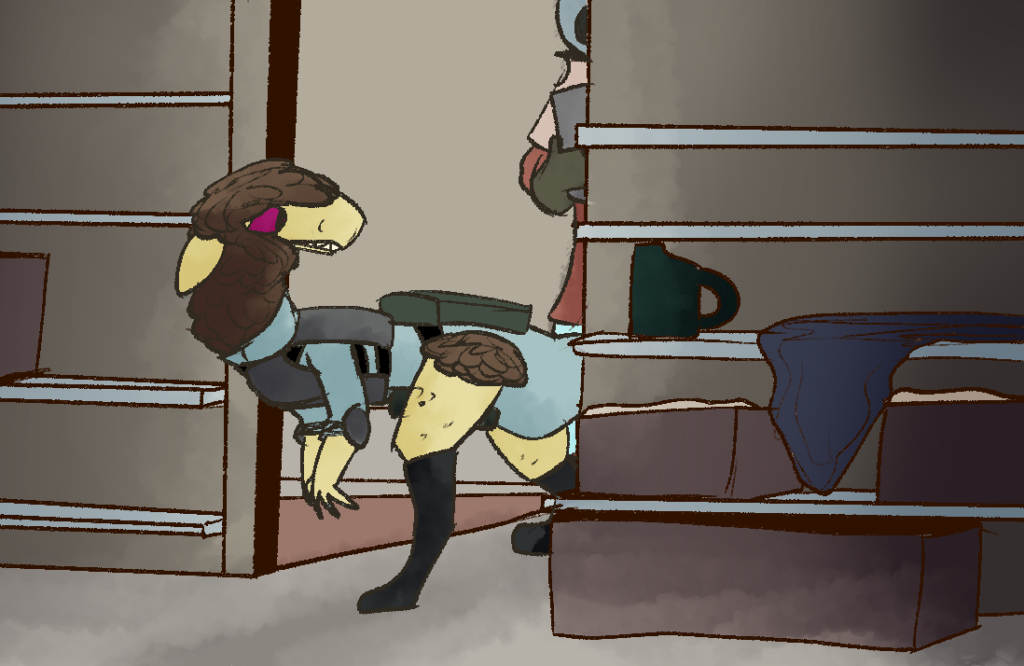
These higher ups, typically decades long residents of the DragonScape, would tap into the supplies meant for other outposts mostly to make their lives more comfortable and, for the still human amongst them, maintain their humanity with extra filters. But as a result of this increasing corruption, supplies that other outposts sorely needed weren’t delivered. This would create a loss of reliable access to SEAC supplies of all sorts. Rations, mana filters, weapons and munitions, and other important supplies becomes far less easily accessible for many increasingly isolated colonials throughout the DragonScape.
Due to this increasing social isolation and withholding of supplies, many outposts would begin forsaking their own assigned duties both as a means of protesting the corruption and bigotry disrupting their lives and to focus on acquiring resources for survival. This would often result in increasingly solid social, economic, and political bonds with the local drekir communities. These in of themselves causing the development of audits and conflict within SEAC outposts.

Due to this increasing social isolation and withholding of supplies, many outposts would begin forsaking their own assigned duties both as a means of protesting the corruption and bigotry disrupting their lives and to focus on acquiring resources for survival. This would often result in increasingly solid social, economic, and political bonds with the local drekir communities. These in of themselves causing the development of audits and conflict within SEAC outposts.
Many outposts would start to see infighting between colonial upper management and the on the ground colonials themselves. With many colonial groups of drekir, often resulting in the staff of many outposts abandoning those outposts to integrate into the local drekir communities of their regions. Some of these outposts would in fact see multiple waves of
staff that, likewise abandoned and undersupplied, would also face audits and condemnations. Other outposts however are simply destroyed, due to the risk of having to deal with angered locals and colonials in the region. This increased infighting, corruption, and abandonment of SEAC outposts would slowly and gradually cause a shrinking of SEAC colonial influence and their outposts throughout the late 22nd and early 23rd centuries AD.
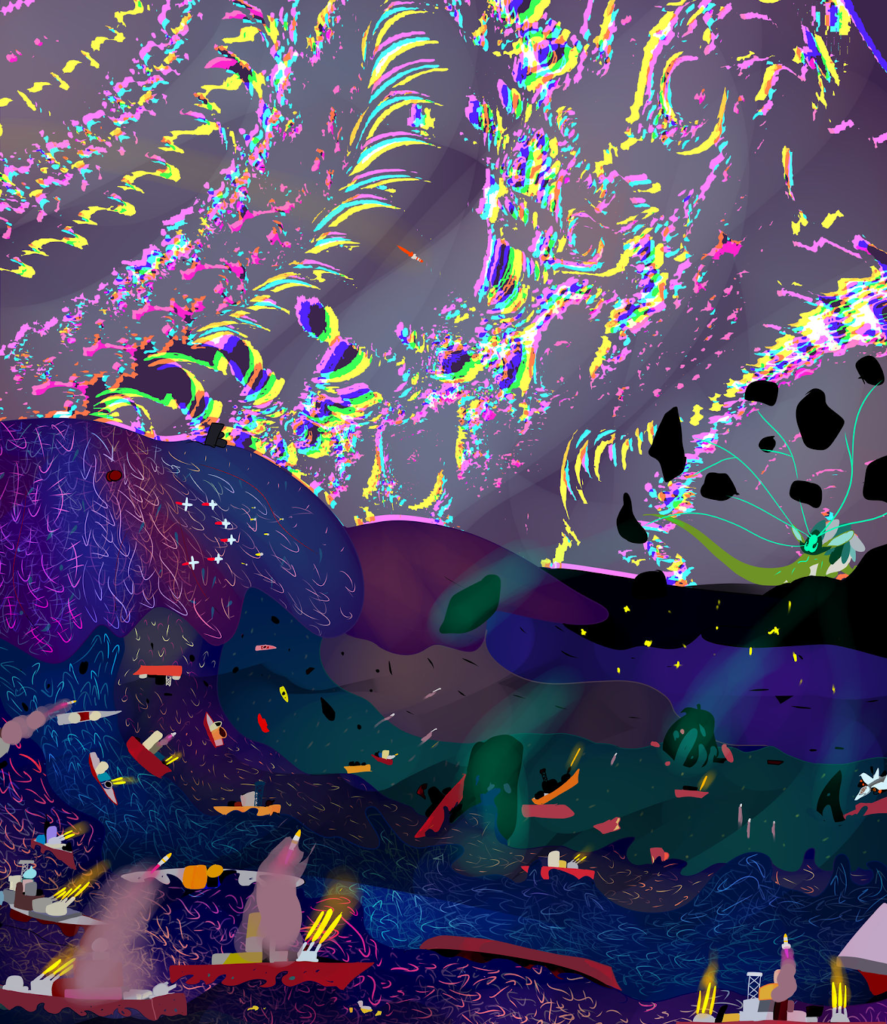
Jallher’s Stand and The 3rd Panic
As the increasing logistical stress of the colonies, and the corruption it encouraged, became apparent to the SEAC government, the prior optimism and wealth wrought from their American colonial net would melt into an increasingly depressive money sink. But SEAC wanted to colonize the Americas, to make an empire and to reap the still largely untapped resources of the Americas. For decades leading up to 2212AD (92PA), SEAC would work on how to actually properly colonize the DragonScape.
By this point in the human world SEAC had gained direct control of many regions of east Asia. Particularly with the more formalized political Indo-Chinese Coalition, itself a collection of Indian and Chinese states working together who, much like SEAC, wanted access to the Americas to form a truly human empire across it.
Moreover, over the decades SEAC had grown increasingly aware of the more powerful entities of the DragonScape, namely the Balãr. Their understanding of the balãr was that they are the godlike entities that made the dragonscape and established their own spheres of influence over the Americas and, that by killing them, they could push back the influence of the DragonScape.
They were wrong… but its kinda hard to know about that sorta thing anywho!
Over the course of 15 years, between 2197-2112 preparations were made. Based on observations and conflicts with various lesser resonant creatures such as Mavõtur, as well as on knowledge of Prejager, SEAC had presumed that while resonant entities were powerful they could be overwhelmed. As a pulse resonant creature can only invalidate so many projectiles or other attacks before it becomes too distracted to protect itself further, allowing for potentially lethal attacks to go through. Though that was only seen on lesser resonant capable entities. So SEAC and their partners in the ICC would take no chances in taking on a Bal.
Over 3.5 million dedicated soldiers, tens of thousands of warships and planes, and tons of ordnance including many nuclear weapons. If everything worked out they would be awash with control of the Americas and legends in history as they saw it. For this operation these millions of SEAC and ICC soldiers would cross into Polygondwanaland and attempt to destroy a bal, particularly Jallher of Aconcagua due to the SEAC belief that, of the balãr it was a weaker one. On the 22nd of August, 2212, Jallhers Stand would begin.
It was a battle in which the Andean mountains were ripped asunder and one in which reality itself cracked and physics waned, but in end SEAC would successfully strike the bal Jallher with over 32 nuclear warheads… But in the process just about all of the 3.5 million men and most all of the military equipment brought into the DragonScape to fight in the reality disrupting battle would die. To say it was a phyrric victory would be an understatement as SEAC had thought, while the casualties would be high, they wouldn’t have suffered a near complete loss of millions of people.
Moreover Jallher wouldn’t even die from its mortal wounds for another 8000 years after the battle. On top of that the other Balãr of the Americas would take note of the event and exact vengeance upon the human colonial groups of the DragonScape. With most of SEACs remaining loyal colonial holdings being destroyed and with a further 478,000 casualties as a result of the attacks of the other balãr in the DragonScape. Itself even intensifying the Chiming Haze to become impassible, preventing further people from entering the dragonscape. Within a week of Jallhers Stand, SEACs colonial empire and its imperial ambitions had crumbled, along with every other human presence in the DragonScape.
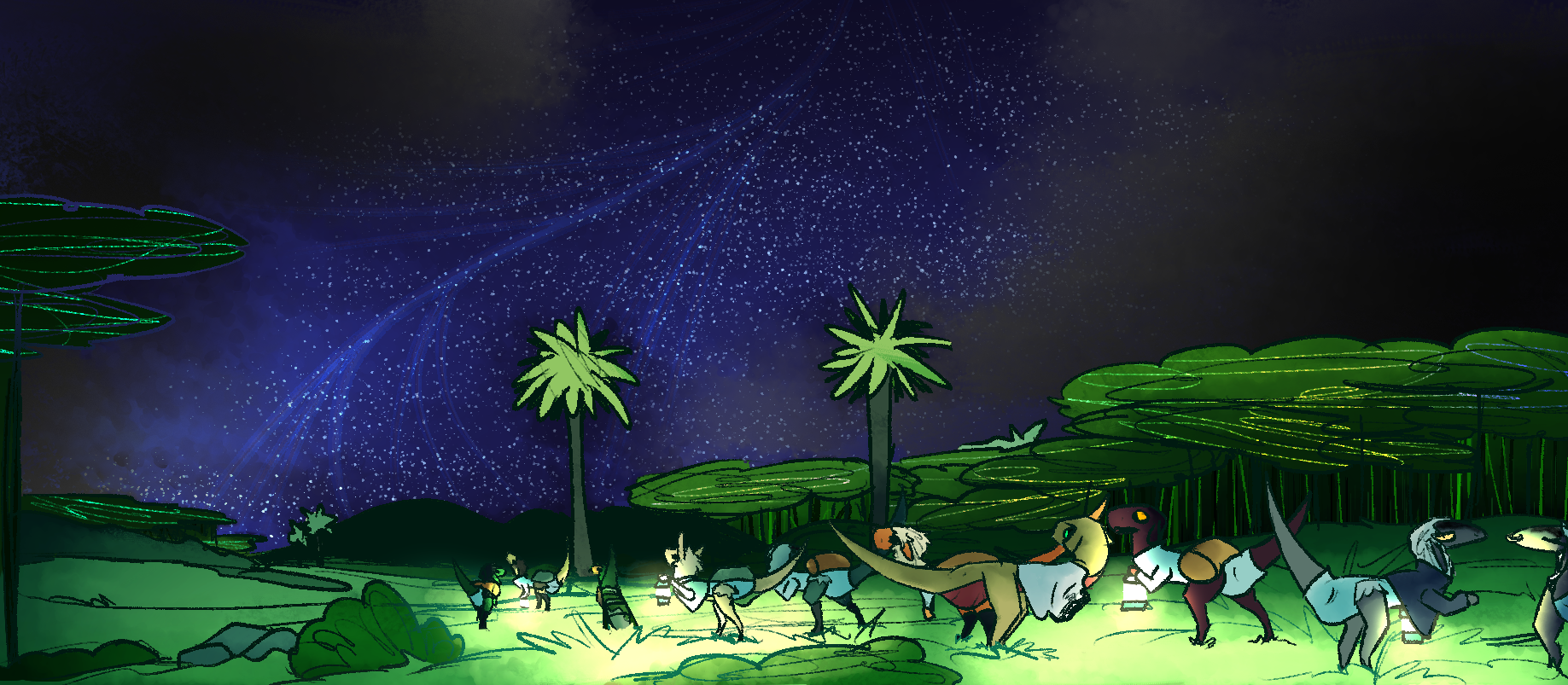
The Aftermath of Jallhers Stand and SEACs collapse
Outside of the DragonScape, the unexpected sheer scale of losses that SEAC had thought they wouldn’t have suffered from would shake the SEAC and ICC apart. The economic strain of their misguided expedition would economically cripple the Confederation and depress the global economy, the social uproar of such a massive loss of life, combined with increasingly obvious decades of corruption and wasted money would result in more violent revolutionary movements within SEACs many states, further disrupting the human worlds economy.
The resulting civil wars would bring a collapse of the Southeast Asian Confederation and, as its economic impacts spread to the rest of the world, would cause a widespread collapse of the existing order of human society in the human world. With the long term result being a downward spiral of the human world into a dark age that would last thousands of years.
But as for the survivors of the 3rd panic within the DragonScape, those colonial drekir who had abandoned the colonial cause prior to Jallhers stand or those who were able to escape the wrath of the balãr would be left with nothing. Their entire lives completely destroyed, with all that remained as an option for most of those survivors being to integrate into the local drekir communities. From there they would just do their best to start their lives anew in the DragonScape, a fate most had already come to understand to a lesser degree.
By the end of the timeline, SEACs ambitions, imperialism, and arrogance had brought the human world to ruin and the survivors that remained in the DragonScape left to live and move on as best they could with the local communities with whom they had relied on before, and would become a true part of for the rest of their lives.
But eventually time moves on, and aside from Jallher and those around it, people would move on.

One thought on “SEAC: The Southeast Asian Confederation”